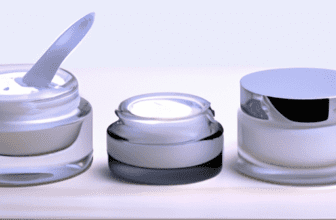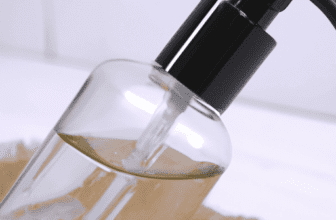Gram-Neg Folliculitis: Causes, Symptoms, and Effective Treatment
Gram-Neg Folliculitis: An Introduction
Gram-Negative Folliculitis is a bacterial infection of the hair follicles. Caused by Gram-negative bacteria found in water and soil. Those with acne-prone skin may develop this infection due to long-term antibiotic use or improper use of skincare products.
Symptoms of Gram-negative folliculitis include redness, swelling and pimple-like bumps on face, neck, chest and back.
Treatment typically involves the use of Doxycycline, isotretinoin, or topical medications such as clindamycin and retinoids.
Gram-negative folliculitis affects those with acne-prone skin and can also occur if you have facial laser treatments or chemical peels. The infection worsens due to long-term antibiotics and poor hygiene such as using shared towels.
A 35-year-old woman had severe inflamed acne that didn’t heal with antibiotic treatment. She was diagnosed with Gram-Negative Folliculitis and her condition improved after proper treatment.
So, why don’t we stop touching our faces with dirty hands and put the blame on bacteria for Gram-Neg Folliculitis?!
Causes of Gram-Neg Folliculitis
Gram-negative folliculitis can be caused by a variety of bacteria, including E. coli, Klebsiella, Pseudomonas, and Proteus species. This overgrowth of bacteria on the skin surface or in hair follicles may be due to factors such as:
- Long-term antibiotic use
- Immunosuppression
- Oral/isotretinoin therapy for acne
- Facial corticosteroid application
These bacteria can be found in the environment, in contaminated water, soil and equipment surfaces. Plus, improper tools used in piercing can cause cross-contamination between people. It is essential to become aware of risk factors for Gram-negative infections.
It’s important to follow good hygiene when experiencing a breakout, as the infection can worsen if left untreated. Avoid sharing personal grooming items, like razors or towels, as these may already contain opportunistic bacteria. If you’re suddenly suffering from pimples, it may be time to change up your diet. Or, look into this article on Gram-Negative Folliculitis symptoms.
Symptoms of Gram-Neg Folliculitis
Gram-Neg Folliculitis can be quite uncomfortable for patients. Itchy, red bumps may form on the skin around hair follicles. Pus might fill the area, making it tender to touch.
Plus, this condition can come back even after treatments. In severe cases, it could spread across large areas of skin, causing major discomfort.
Be aware that these symptoms aren’t exclusive to Gram-Neg Folliculitis, and may be caused by other conditions. So if you experience any of them, it’s best to see a healthcare professional for a proper diagnosis.
Gram-Neg Folliculitis was first discovered in 1972. It’s thought to mainly be caused by bacteria from the family Enterobacteriaceae. People with acne-prone skin or who have been on antibiotics for a while are usually most affected. Treatments may include antibiotics that target Gram-negative bacteria or topical antimicrobial medication. With the right care and management, most patients with Gram-Neg Folliculitis can expect positive outcomes.
The only risk factor for Gram-Neg Folliculitis? Being human.
Risk Factors Involved in Gram-Neg Folliculitis
Gram-Neg Folliculitis is linked to certain risk factors. These include:
- covering of hair follicles
- hot and humid environments
- antibiotics
- immunosuppression
- acne history
Knowing these is key for prevention. Plus, too much washing or using irritating soaps can cause it. Also, using shared Jacuzzis or saunas can lead to it too. Avoiding these is important to prevent it.
But, for prevention, hygiene practices like cleaning after exercise or sweating are musts.
Those suffering from it should not squeeze affected areas as it could worsen the outbreak.
Time to get to know your skin better, as diagnosing Gram-Neg Folliculitis isn’t easy.
Diagnosis of Gram-Neg Folliculitis
Diagnosing Gram-Negative Folliculitis involves laboratory tests that check for the presence of gram-negative bacteria. Biopsies, physical examination, medical history and analysis of symptoms may also be used. Treatment options include antibiotics, retinoids, benzoyl peroxide and corticosteroids. For severe cases, oral medication may be necessary. Also, underlying conditions like acne or rosacea need to be managed. Note that it can occur in those taking antibiotics for acne vulgaris. (1)
(1) Schwarz N.G., Hoffmann C., Tenner R., et al., “What Causes Gram-Negative Folliculitis in Acne Vulgaris? An Analysis of Propionibacterium acnes Isolates from 18 Singaporean Patients“. Acta Derm Venereol. 2019;99(12):1125-1130.
Effective Treatments for Gram-Neg Folliculitis
Gram-Neg Folliculitis is an unwelcome guest. It can cause pain and discomfort for those affected. Fortunately, there are treatments available. Antibiotics like tetracycline and doxycycline can help get rid of the bacteria causing Gram-Neg Folliculitis.
Topical antibiotics are also available. Clindamycin or Benzoyl Peroxide can be applied to the skin to kill bacteria and reduce inflammation.
Good hygiene is also key. Avoid tight clothing, wash frequently and shower after exercise or swimming. Keeping skin clean reduces the risk of inflammations.
Avoid sharing personal items or towels – better safe than sorry!
Prevention and Precautionary Measures for Gram-Neg Folliculitis
To fight off Gram-Neg Folliculitis, we need to take preventative steps.
- Keep skin clean by washing regularly and don’t share personal items like towels, razors, or combs.
- Moisturize skin and don’t use harsh chemicals.
Also, wear loose clothing to allow skin to breathe. Don’t scratch or pop any bumps.
If you already have Gram-Neg Folliculitis, take extra precautions. Wear gloves when working in unclean environments. Avoid hot tubs and public pools until the infection is gone.
Living a healthy lifestyle boosts immunity. Exercise, eat right, get enough sleep, and keep stress low – this reduces the likelihood of getting Gram-Neg Folliculitis! Let’s take a stand – nobody wants a face full of angry red bumps!
Conclusion: A Call for Action and Awareness.
Increasing Knowledge and Taking Immediate Action Against Gram-Neg Folliculitis is vital. People working with chemicals or oil must have the right protective gear to avoid the condition. Using clean equipment and good hygiene are also key in preventing it.
Treatment must not be ignored or delayed. Delaying leads to furunculosis and other serious skin problems. The Journal of Applied Microbiology states delay makes infection control hard.
So, it is essential to spread awareness and take quick action against Gram-Neg Folliculitis. This will help with prevention and reduce patient suffering.
Frequently Asked Questions
Q: What is Gram-Neg Folliculitis?
A: Gram-Neg Folliculitis is a bacterial skin infection that occurs when hair follicles become infected with bacteria that are typically found in the gastrointestinal tract.
Q: What causes Gram-Neg Folliculitis?
A: Gram-Neg Folliculitis is caused by the bacteria Pseudomonas aeruginosa, which is commonly found in soil, water, and other moist environments.
Q: What are the symptoms of Gram-Neg Folliculitis?
A: Symptoms of Gram-Neg Folliculitis include the appearance of tiny, red or pink bumps on the skin, typically around hair follicles, that can become pustules or abscesses.
Q: How is Gram-Neg Folliculitis diagnosed?
A: Gram-Neg Folliculitis is typically diagnosed by a healthcare provider based on the appearance of the skin lesions and a history of exposure to potentially contaminated water sources.
Q: What is the most effective treatment for Gram-Neg Folliculitis?
A: Treatment for Gram-Neg Folliculitis may include topical or oral antibiotics, as well as symptomatic relief from pain and itchiness. Avoiding exposure to potentially contaminated water sources is also important to prevent recurrence.
Q: Is Gram-Neg Folliculitis contagious?
A: Gram-Neg Folliculitis is not typically contagious from person to person, but it can be spread through contact with contaminated water sources.





